TL;DR
You’re not crazy to consider a hardscaping business — but start as a side hustle and validate demand, because even “small” patios often require 3+ days, real equipment, and rigorous prep. Use ReimagineHome.ai to visualize patios, walkways, retaining walls, and lighting so clients sign off faster, scope creep drops, and you protect your time, budget, and body.
3 days is a realistic minimum for small hardscape installs: TL;DR
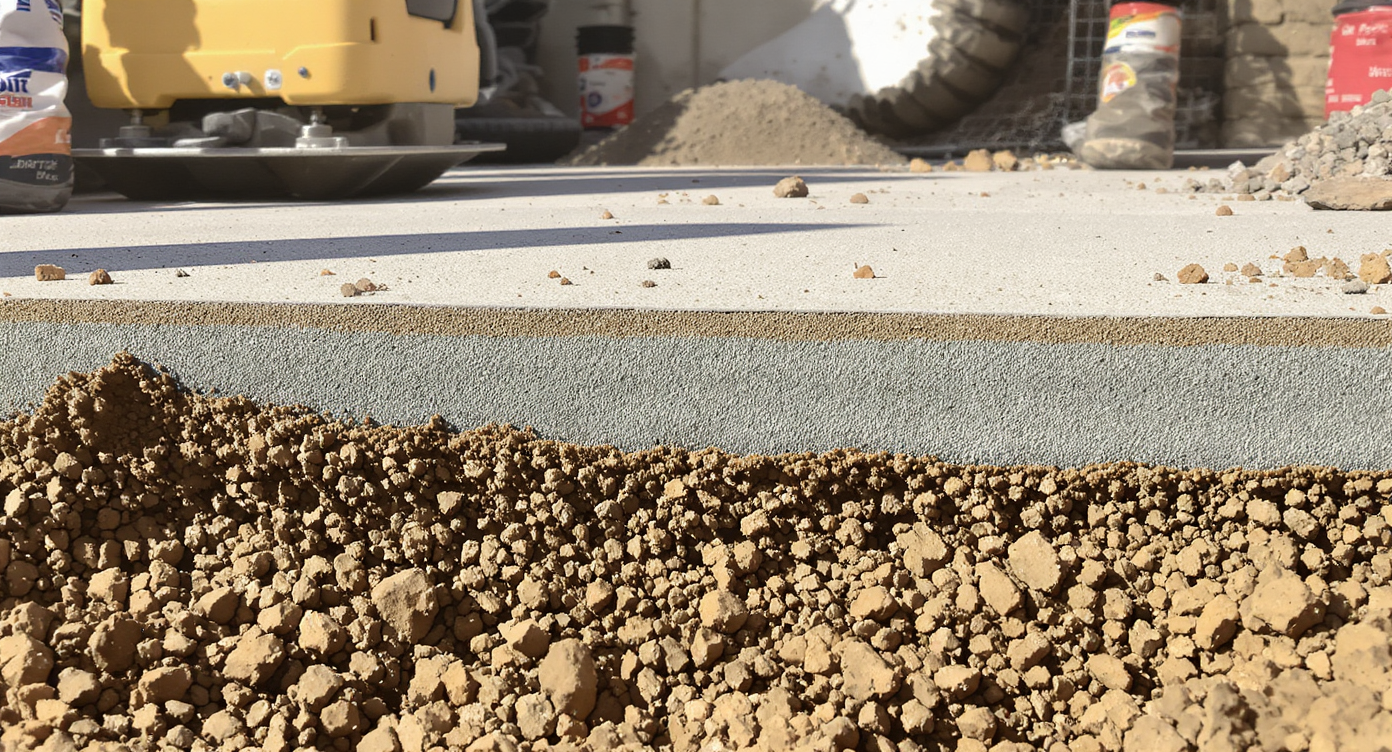
Proper patio base prep with compacted aggregate and setting bed ensures lasting stability.
At a Glance - Small hardscaping jobs (patios, short retaining walls) often span 3–5 days without a large crew. - Base prep typically means 4–6 inches of compacted aggregate (more in freeze–thaw zones) at ~95% compaction, then a 1-inch setting bed. - Overhead eats cash: insurance, hauling, fuel, disposal, plate compactors, saws, and a reliable truck or tracked machine. - Client management is a second job; weekend-only schedules can frustrate neighbors and homeowners. - Visualizing designs up front reduces revisions, builds trust, and helps you price correctly. Try your own exterior layout instantly on ReimagineHome.ai: https://www.reimaginehome.ai/?utm_source=blog
95% compaction and 4–6 inches of base keep patios stable: Introduction
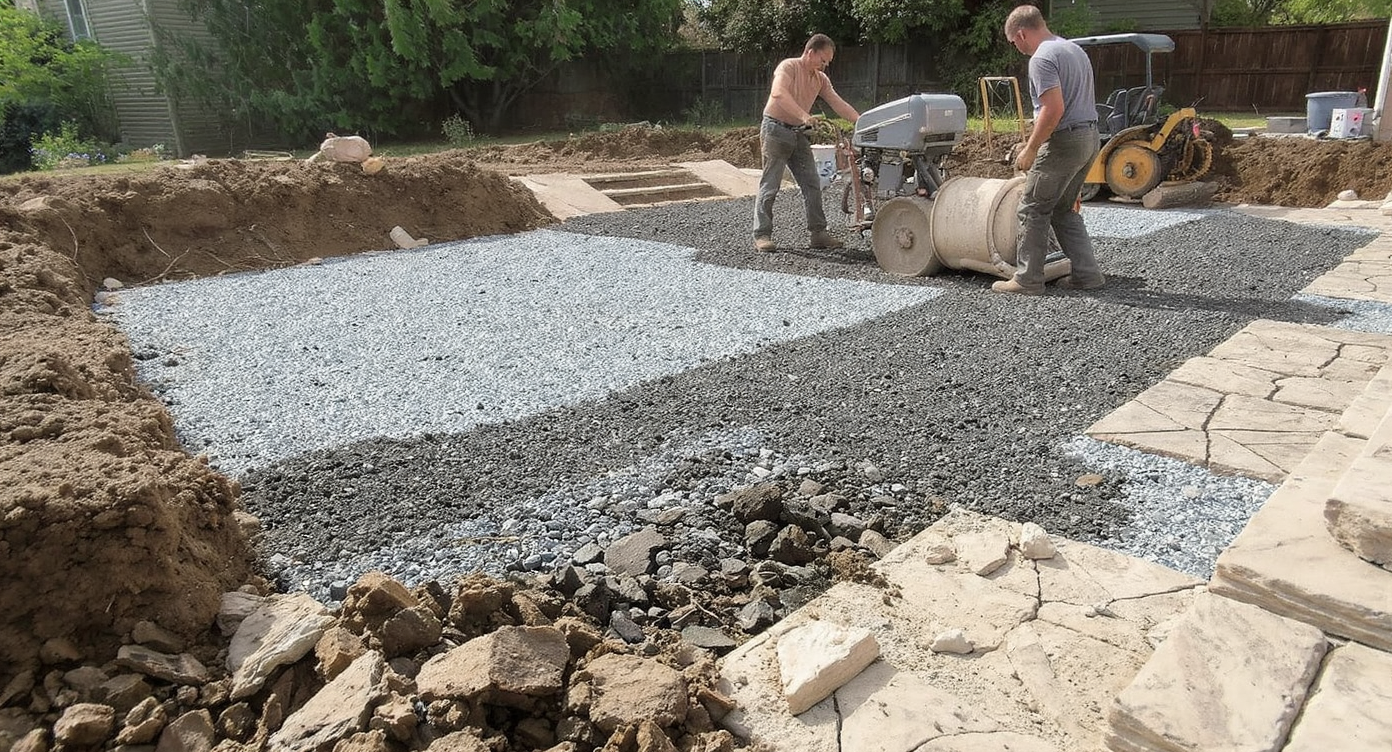
Achieving 95% compaction with a solid base keeps patios stable over time.
If you love design and the install process, hardscaping can be deeply satisfying. The physics are simple but unforgiving: water must leave the site, loads need uniform support, and every edge restraint matters. A stone patio or paver walkway that lasts starts with excavation, geotextile where appropriate, a compacted base, a consistent setting layer, and tight joints — ideally with polymeric sand. Most landscape designers also size primary walkways at 36–48 inches for comfortable two-person passage, with wider flares at entries for curb appeal. What surprises most career switchers isn’t the creativity; it’s the logistics. Materials arrive late. Dump fees add up. A neighborhood that loved your DIY patio may not love saws and compactors on Saturdays. And when you do it well, word spreads — which means estimates in the evenings, scheduling, and lining up subs. That’s why easing in as a side business, building basics on smaller projects, and investing in the right tools beats a cold-turkey leap every time.
Anecdote
A homeowner in the Midwest turned a narrow side yard into a cinematic, stone-lined walkway with 2700 K step lights. The trick wasn’t the stone — it was respecting a 2% cross-slope for drainage, keeping the path at 42 inches clear, and previewing three variations in ReimagineHome.ai so the family could choose the curve that felt right at night.
50–70% of low‑maintenance yard budgets go to hardscape: Why the business is booming — and brutal

Hardscape dominates low-maintenance yard budgets, comprising 50-70% of expenses.
Demand for low-maintenance outdoor living pushed homeowners toward hardscaping: stone patios, porcelain pavers, seat walls, fire pits, and clean-lined steps. It’s durable, drought- and mower-proof, and it supercharges front yard design and curb appeal. But the business is not all glossy after photos. You’re balancing margins against rising costs for labor, aggregate, and fuel; permits and inspections on retaining walls and gas fire features; and seasonality that can stall cash flow. The other reality: in residential work, you’re working for clients, not just for yourself. Clear scopes, written change orders, deposits, and visuals aren’t nice-to-haves — they’re survival tools.
4 trends reshaping hardscaping and curb appeal in 2025: Key Trends
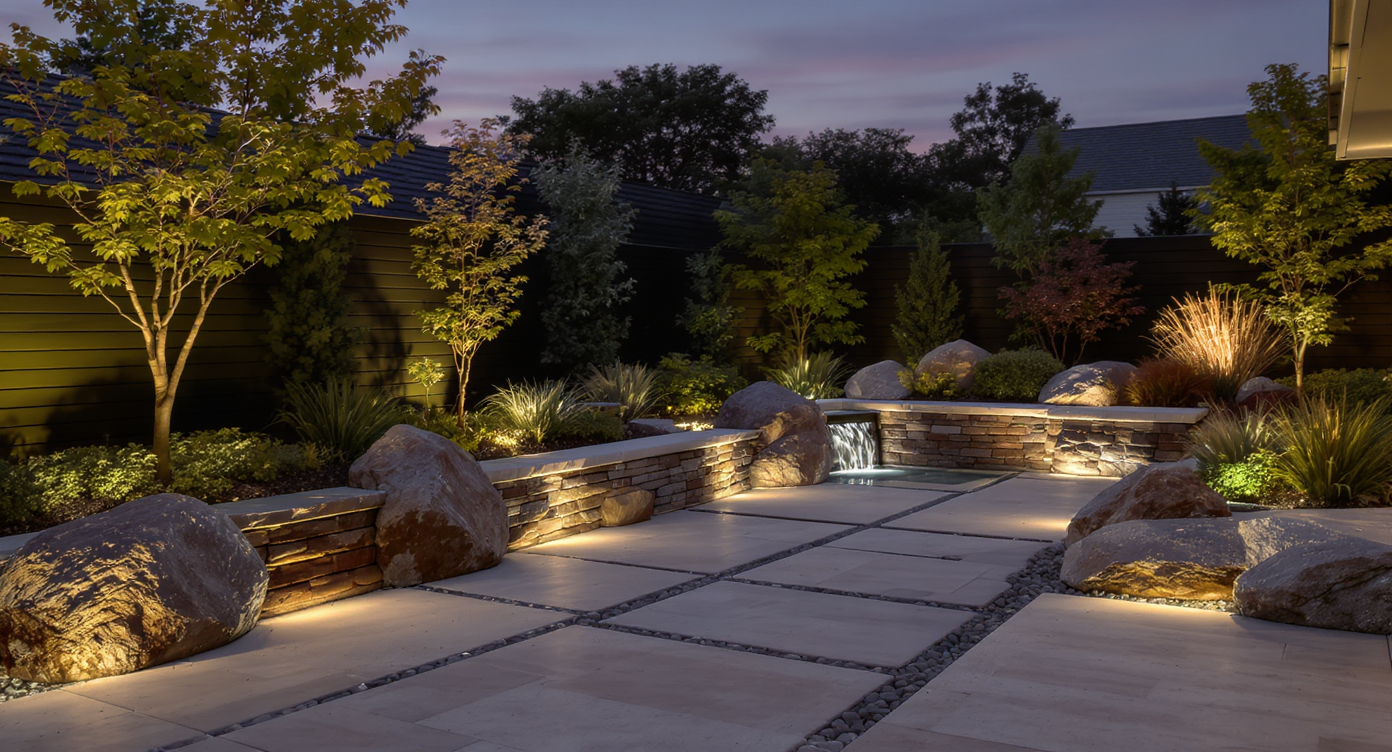
Emerging trends in hardscaping use warm lighting and natural materials to enhance curb appeal.
1) Outdoor lighting at 2700–3000 K looks best on stone. Warm-white LEDs flatter stone patios, boulder accents, and privacy planting while keeping glare low. Layer path, step, and accent lighting early in the design so you can run conduits and avoid rework. 2) Privacy hedges take 3–5 years to mature. Pair fast-growing screens with near-term solutions like cedar fencing sections, trellises, or berms built during grading. 3) Terrace levels change small yards dramatically. A flat lawn can become two outdoor rooms with a 16–18 inch seat wall and a 6–7 inch step. Mind uniform riser heights; codes (and shins) are strict. 4) Porcelain and textured concrete pavers reduce maintenance. They resist stains and look modern; just specify anti-slip finishes around pool and patio design. Bonus trend: Modern landscaping ideas for small front yards prioritize clean walkway ideas, drought-tolerant garden design, and crisp steel or stone edging to keep gravel and mulch in place.
3 concept variations usually secure approvals faster: Use ReimagineHome.ai to sell and de‑risk
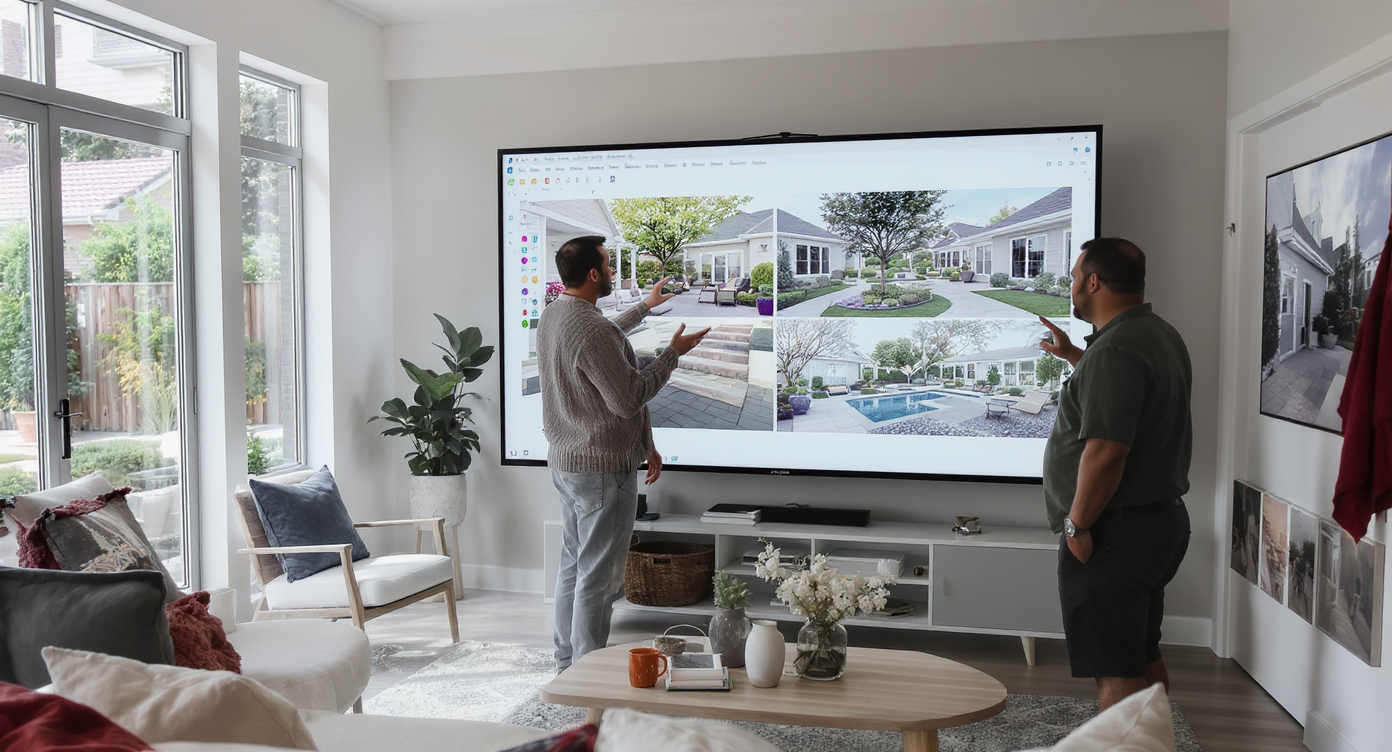
Present multiple hardscape concepts using digital tools to win client trust and approvals quickly.
Most clients decide between 2–4 concepts; show options quickly and you win trust. ReimagineHome.ai lets you upload an exterior photo and generate multiple landscaping ideas — stone patio shapes, retaining wall heights, walkway alignments, even outdoor lighting design — in minutes. Use it to: - Test budgets by swapping materials (concrete paver vs. porcelain vs. natural stone), then price the delta. - Show drainage solutions (subtle swales, permeable joints) before excavation. - Compare front yard makeover ideas for curb appeal with different planting palettes and edging. - Create small-yard alternatives that respect 36–48 inch path widths and 6–7 inch uniform risers. Alt: “Twilight view of a stone patio, seat wall, and warm 2700 K path lights, visualized with ReimagineHome.ai.” Caption: “ReimagineHome.ai helps you test patio forms, materials, lighting, and privacy planting before you break ground.” Explore deeper how-tos on our blog: - Low-maintenance hardscaping guide: https://www.reimaginehome.ai/blogs/landscaping/low-maintenance-hardscaping-guide?utm_source=blog - Outdoor lighting design at 2700–3000 K: https://www.reimaginehome.ai/blogs/lighting/outdoor-lighting-design-2700k-3000k?utm_source=blog - Front yard design ideas for instant curb appeal: https://www.reimaginehome.ai/blogs/landscaping/front-yard-design-ideas-curb-appeal?utm_source=blog
Visualization Scenario
Upload a photo of your existing slab. In ReimagineHome.ai, generate three backyard makeover schemes: 1) A 14x18 foot concrete paver patio with a 16-inch seat wall and warm path lights. 2) A porcelain paver terrace with a cedar privacy screen and planter-backed steps. 3) A permeable stone patio with a gravel band, steel edging, and a wood-burning fire pit. Price each, then schedule the winner.
6 quick answers to hardscaping design and install questions: FAQ
Q1: How long does a 300–400 sq ft paver patio take? A: With two experienced installers, plan 3–5 days including excavation, base, laying, cuts, edge restraint, and polymeric sand. Add time for site access constraints and disposal. Q2: What base depth should I specify? A: Common residential patios use 4–6 inches of compacted aggregate (more in freeze–thaw regions), plus a ~1 inch setting bed. Target ~2% pitch away from structures. Q3: How much should I charge starting out? A: Add your direct costs (materials, labor, equipment/haul), then overhead (often 20–30%), then profit (often 10–20%). Require a deposit and written change orders. Q4: What materials are truly low maintenance? A: Concrete or porcelain pavers with polymeric jointing sand, powder-coated steel edging, sealed natural stone in select areas, and properly sized drains. Around pools, pick anti-slip textures. Q5: Can I run this as a weekend side hustle? A: It’s possible for mini jobs, but noise and access can frustrate homeowners and neighbors. Consider weekday evenings for consults and schedule installs in concentrated blocks. Q6: How do visuals help me sell? A: Clients sign off faster when they see options. Generate 2–4 concept views in ReimagineHome.ai, price each, and document inclusions to reduce scope creep.
1 free design pass can save thousands in change orders: Visualize your home’s next chapter
Two micro-stories, same lesson. A teacher eased in during summers, grew slowly on word-of-mouth, then scaled fast and found the job shifted to bidding and putting out fires — rewarding, but different from laying pavers. Another homeowner-turned-operator bought a used tracked machine for under $25,000, paired it with a heavy-duty dump trailer, and built a steady book doing grading, driveway refreshes, boulder placement, and small patios — diversified, sustainable, and client-first. Wherever you land, protect your body with the right tools (ramps, dollies, excavators, plywood on lawns), your time with visuals and contracts, and your margins with disciplined pricing.
.svg)

.svg)

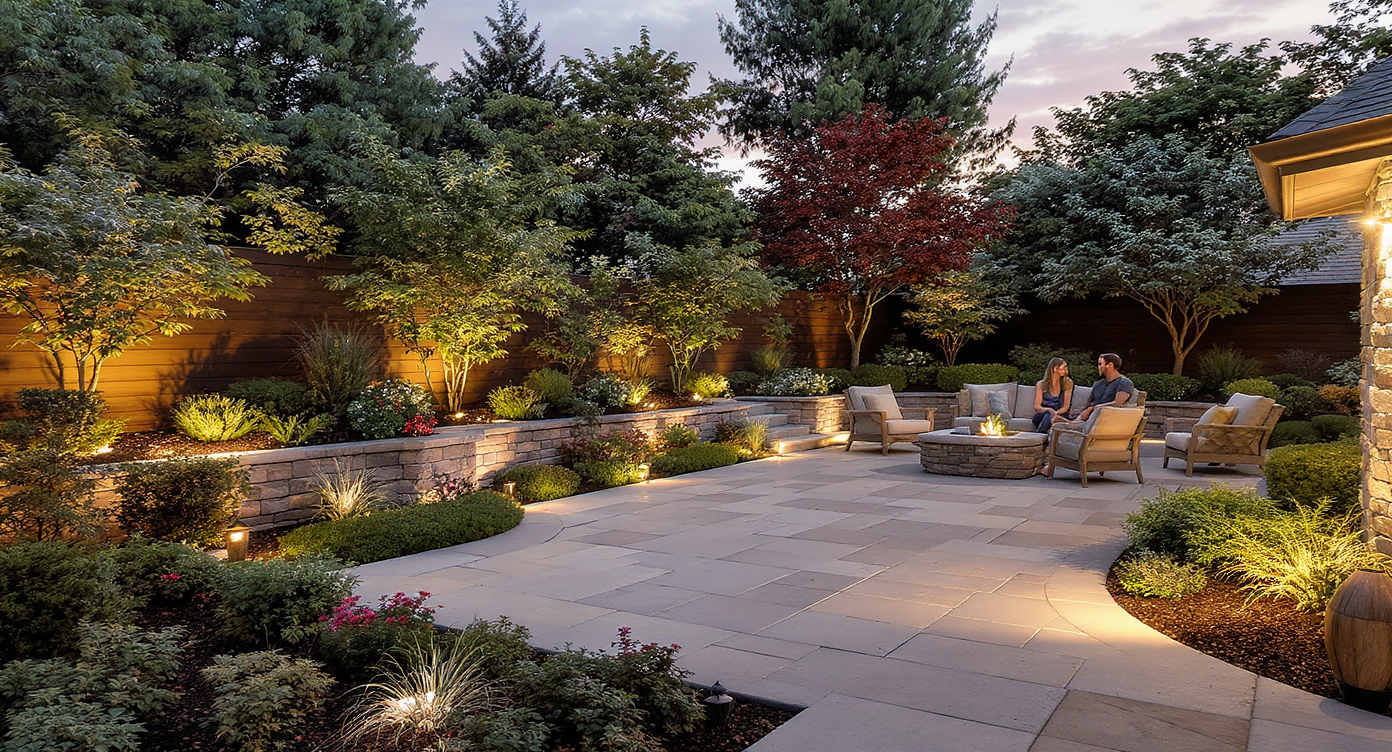




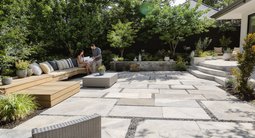


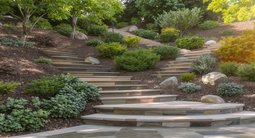
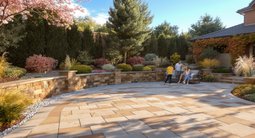


.png)